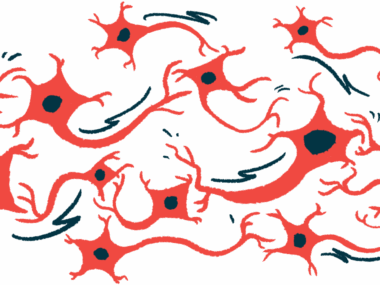Rett Protein’s Loss Tied to Premature Closing of Brain Plasticity Window
Written by |

The lack of a working MeCP2 protein — the most common cause of Rett syndrome — prematurely closes a window of neuronal plasticity in a brain region involved in social memory, a study showed.
Neuronal plasticity is the brain’s ability to re-wire itself, to strengthen or weaken its neuronal connections, in response to stimuli.
Notably, this early shutdown was associated with the formation of perineuronal nets (PNNs) — net-like structures around nerve cells that regulate their plasticity — and their degradation was sufficient to rescue the plasticity window in a mouse model of Rett.
These findings, along with the identification of several molecules involved in this process, shed light on the potential mechanisms behind some Rett symptoms, namely social impairments, and may help to identify new targets and treatment approaches, the researchers noted.
The study, “Perineuronal net degradation rescues CA2 plasticity in Rett syndrome model mice,” was published in The Journal of Clinical Investigation.
Rett syndrome is caused mostly by mutations in the MECP2 gene, which provides the instructions to produce MeCP2. This protein regulates other genes’ activities, is involved in nerve cell function and communication, and is a known regulator of plasticity windows in the developing brain.
Rett, a rare neurodevelopmental disorder, is characterized by an “apparently normal development in the first year of life, followed by a rapid, profound regression in cognitive, motor, and social function,” the scientists wrote.
Given that previous studies in animal models of Rett reported neuronal abnormalities before symptom onset, understanding when and how neurological impairments develop as a result of Mecp2’s lack is key to identifying early windows of intervention in patients, the team added.
PNNs, the net-like structures around nerve cells that shape their activity and regulate the consolidation of those circuits, were previously shown to be abnormal in brain regions of patients and a Rett mouse model.
As PNNs are known to restrict neuronal plasticity in area CA2 of the hippocampus — a brain region involved in social memory and behavior — a team of researchers in the U.S. evaluated whether MeCP2’s absence resulted in PNN abnormalities in that region.
They initially found that PNNs appeared to be increased in area CA2 of a post-mortem brain sample of a Rett patient, compared with a sample from an age- and sex-matched individual without this disorder. Consistently, PNNs were also found to develop precociously in this region and remain higher than normal in a mouse model of Rett syndrome.
Further analysis revealed an early neuronal plasticity window in CA2 that is naturally closed by the formation of PNNs in healthy mice, and that is prematurely closed in mice lacking the MeCP2 protein.
Induced degradation of PNNs in the hippocampus of the Rett model restored CA2’s plasticity window, highlighting “PNNs as a causal mechanism underlying the premature closure of CA2 plasticity in the RTT [Rett] mouse,” the researchers wrote.
Deletion of the Mecp2 gene (the mouse version of MECP2) specifically in CA2 neurons also led to an increase in PNNs around them, suggesting that MeCP2 may directly regulate the formation of these restrictive structures in this brain region.
Additional analysis showed that CA2 PNNs were negatively regulated by neuronal activity, and that the activity of several genes was changed in the hippocampus of the Rett mouse model relative to healthy mice.
Particularly, the activity of the Pcp4 gene, a known calcium modulator, was significantly reduced, while that of the Fgf2 gene, which codes for a growth factor that plays a role in hippocampal development and learning, was significantly increased. (Calcium is key for nerve cell communication.)
In addition, the levels of matrix metalloproteinase-9 (MMP-9) — an enzyme involved in PNN breakdown and known to regulate neuronal plasticity periods — were significantly reduced in the hippocampus of mice lacking MeCP2, compared with healthy mice.
These findings suggest that the MeCP2 protein may regulate the activity of MMP-9 in the CA2 area, and thereby PNN formation and the closure of this early-life window of social learning.
“Given CA2’s possible role in social behavior during development,” the researchers wrote, “abnormal PNN development in CA2 may be key in understanding the onset of social deficits that are common in RTT and is a hallmark in children with autism.”
Future research on area CA2, including those targeting abnormal PNNs in mice lacking MeCP2, could provide “further insights into to the brain circuits underlying symptoms observed with RTT,” such as social recognition memory and aggression, the team added.
Such studies may also help to identify and develop new treatment approaches for Rett syndrome, the scientists suggested.






